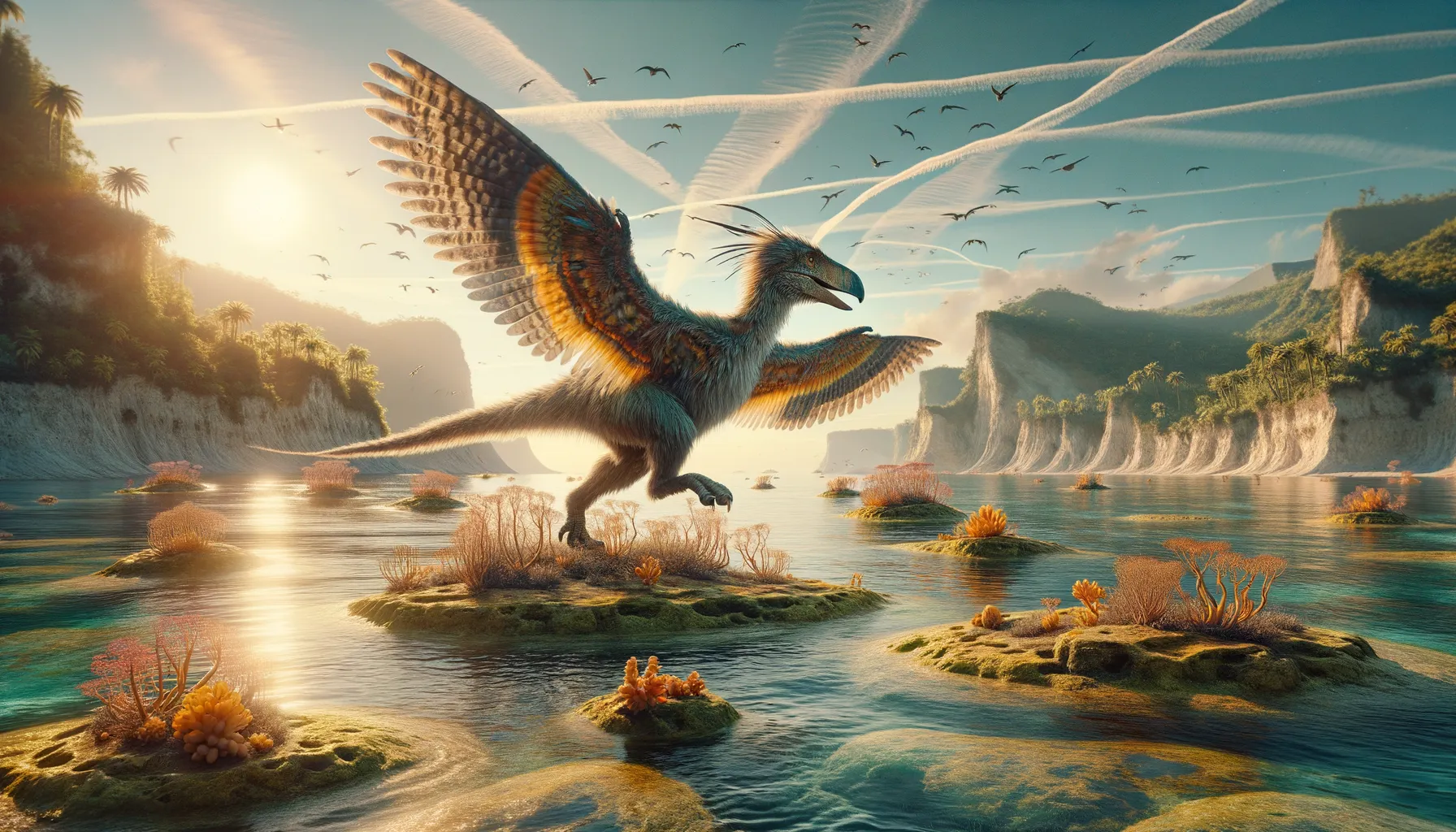
Archaeopteryx
A feathered reminder of evolution's bridge.
Period
Jurassic
Length
About 50 centimeters from head to tail.
Height
Around 30 centimeters tall.
Weight
Approximately 0.8 to 1 kilogram.
Archaeopteryx is one of the most famous transitional fossils bridging the gap between non-avian dinosaurs and birds. With its feathered, winged form and dinosaur-like features, it provides key evidence of the evolutionary transition. It lived around 150 million years ago when Europe was a series of islands in a shallow, warm tropical sea. This small creature had features of both birds and theropod dinosaurs.
Diet
Archaeopteryx likely fed on small animals or insects. Its diet would have been typical of a small carnivore, snatching prey with its sharp teeth.
Hunting
Archaeopteryx may have hunted by ambush or quick darts using its agility. It likely relied on both its flight abilities and ground movement to catch prey.
Environmental challenges
The environment during the Jurassic period presented challenges such as fluctuating sea levels and volcanic activity. Archaeopteryx also had to compete with other small predators in its habitat. Seasonal shifts might have affected food availability, requiring adaptability in its hunting strategies. Its feathered body helped it navigate these challenges, providing insulation and aiding in flight.
Speed
Likely a nimble flyer and agile on the ground.
Lifespan
Its exact lifespan is unknown, but similar to modern birds.
First discovery
First discovered in 1861 in Germany.
Fun Facts
- Archaeopteryx is often considered the link between dinosaurs and birds due to its mix of reptilian and avian features.
- It lived around 150 million years ago during the Late Jurassic period in what is now southern Germany.
- Archaeopteryx had feathers like a bird but also shared traits with dinosaurs, such as teeth and a long bony tail.
- It was about the size of a modern-day raven, with broad, feathered wings that suggest it could glide.
- The first Archaeopteryx fossil was discovered in 1861, just two years after Charles Darwin published 'On the Origin of Species'.
- Archaeopteryx's name means 'ancient wing', reflecting its early representation of avian characteristics.
- Fossils of Archaeopteryx are rare, with only a handful of specimens found, all from limestone deposits in Germany.
Growth and Development
Like many avian species, Archaeopteryx hatchlings would have been relatively small and vulnerable. It likely grew rapidly to reach maturity, although no direct evidence specifies the exact growth rate. Juveniles might have been dependent on more secluded areas within their habitat for protection. Fossil data provides limited insight but suggests parental care was possible.
Habitat
Archaeopteryx lived in a varied landscape of lush islands and dense forests. Its environment included coastal areas, suggesting it may have occasionally flown over water. Such a habitat would have provided abundant food resources and hiding spots. The climate was warm and tropical, supporting diverse flora and fauna.
Interaction with other species
Archaeopteryx likely coexisted with other small reptiles, primitive birds, and insects. Competitive interactions would have been common, especially for food resources. It might have had predators, possibly larger reptiles, requiring constant vigilance. Fossil evidence does not indicate direct social interaction among Archaeopteryx individuals.
Natural lifespan
Archaeopteryx had a natural lifespan similar to modern birds.
Reproduction
Reproduction likely involved laying eggs, similar to modern birds. Nesting behavior remains speculative but could have included ground or tree nests. Parental care might have been provided to ensure offspring survival. There's no direct fossil evidence for nesting sites or juveniles.
Social behaviour
Social behavior in Archaeopteryx remains largely unknown. It may have been solitary or formed small groups for protection. Fossil findings do not suggest organized flock behavior. Interactions with conspecifics were probably limited, focusing on competition and mating.
Fossil locations
The first Archaeopteryx fossil was found in the Solnhofen limestone deposits of Bavaria, Germany. Subsequent discoveries have been made at the same location, confirming its presence in that region. These fossils have provided significant insight into its anatomy and evolutionary significance. The Solnhofen site is renowned for its well-preserved Jurassic fossils, offering valuable context for Archaeopteryx's ecosystem.
